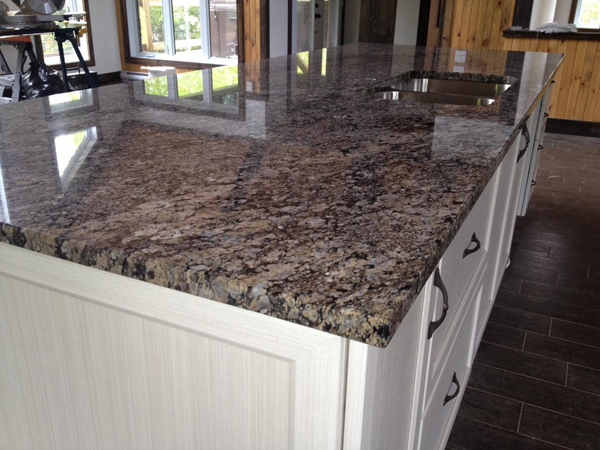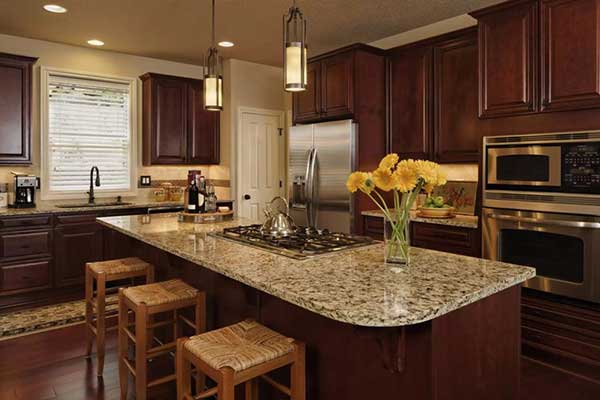- Tell : 09131114998
- Email : info@uranus-stone.com

Granite stone and its special features
- 1399/03/31 ,
- stone industries Uranus
- 0 Comment
Granite and its special features
Granite is a volcanic rock that is one of the most important decorative rocks due to the eruption of magma that reaches the surface of the earth and cools down and the formation of rock occurs underground and in the earth's crust (one to one and a half kilometers). Due to its high strength, it is used in house facades.
Granite is also used to make sculptures and works of art. In addition, granite can be used for the exterior of the house. Granite is composed of quartz rock, potassium feldspar (minerals that contain sodium), plagioclase and biotite, lime and other chemical elements. It has gray and pink colors. Many Hindu temples and Egyptian buildings are built with this stone.
Properties of granite
Modern industrial technology has brought many innovations, and it is a common tool for use in new structures.
Granite has technical and aesthetic power:
Granite offers a wide range of aesthetic results in polishing different surfaces, which can be used. The market is marketing new types that are being produced anywhere in the world. Thus, this sector needs constant innovation in the market. The variety of colors, textures and designs - the fruit of uninterrupted technology development - covers every design need and is far superior to other popular products.

Granite is stable:
Due to the natural origin of granite and the limited conversion of raw materials, it needs to produce less energy consumption than other materials such as ceramic or concrete.Granite is characterized by its durability, lower energy consumption in production, and the possibility of reuse and easy disposal.
Its environmental effects begin with the extraction of raw materials that can hardly enter the environment through any change until they reach the producer.
The cut and finished product is packaged in the factory and supplied through distribution channels. Eventually, these granites reach the consumer or end user. At the end of its useful life, it becomes a waste that must be properly and carefully managed.
Granite retains its natural physical properties and characteristics:
Granite is one of the construction uses that is used almost as it comes out of nature without changing the structure and mixing with chemicals and only the required dimensions and appearance are provided. This feature combines granite with a wide range of additives and current materials such as wood, glass or steel and achieves unique designs.
Granite is solid and compatible and very flexible and is a key factor in its durability, for example in facade cladding or a path that is subjected to high pressures such as wind, as well as high resistance to abrasion and Loosening when passing a car or passing a crowd of pedestrians.

Granite is affordable:
Purchasing costs are sometimes higher than other alternative materials, but granite has lower maintenance costs as well as longer life.
Granite is not flammable:
Granite fire reaction score is "non-combustible and non-fire reaction" with a score of A1. In addition, in the event of a fire, it does not release a substance that is harmful to health. Undoubtedly, these reasons make granite the preferred choice in contemporary architecture.
Granite in architecture
In architecture, it is used for both the exterior and the interior of the house and decorates the house. The staircase can also be covered with layers of granite. Stone material (such as granite) is also suitable for the exterior of the house; Because it has a high resistance to climate change.
But it needs careful design and to design it, you must also pay attention to the environment. Based on environmental conditions, the materials used should be evaluated.
Click for advice on buying different types of stones with Uranus Stone Industries.
Granite
Granite stone
buy granite
- Marble4
- Marble3
- Marble1
- Marble
- Marble stone
- Granite1
- Granite
- Granite Stone
- 1Chinese
- Chinese stone2
- Chinese stone1
- Isfahan marble
- Isfahan granite
- Travertine1
- Travertine
- Travertine stone
- Isfahan travertine stone
- Stone view1
- Building stone
- Stone facade1
- Stone facade
- Stone cleaning
- Artificial stones
- Natural stones
- Interior decoration
- Cleaning the stone
- Crystal
- Dolomite
- Calcite
- Quartz
- Graphite
- Hematite
- Simonite
- periet
- Manganese carbonate
- Lemonite
- Stone resistance
- Natural stone
- Artificial Stone
- Stone flooring
- Marble of the Emperor
- Dehbid cream marble
- Dehbid marble
- Persian Rose Marble
- Persian Marble
- Persian Rose Stone
- Marshall Black Marble
- Marshall Marble 1
- Black marble
- Marshall Black Stone
- Black Marshall Marble
- Spider black marble
- Spider marble 1
- Black Spider Stone
- Isfahan Chinese stone
- Black marble of Najafabad
- Najafabad marble
- Marble of Najafabad
- Black marble of Najafabad1
- Porcelain stone
- Gallstone
- Bath stone
- Stone toilet
